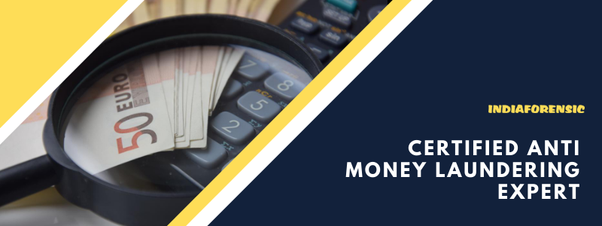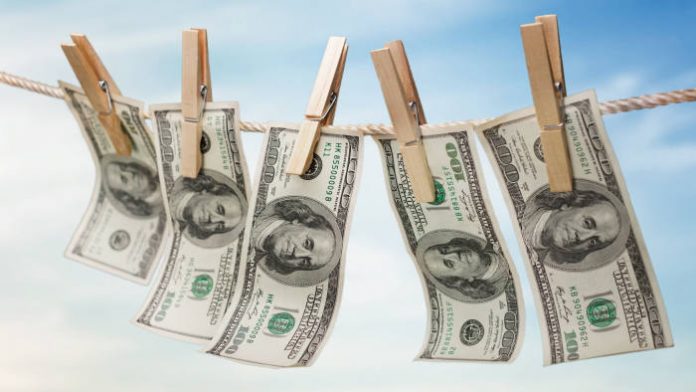The September 11 attacks were the reason for the Patriot Act in the United States. This led to an emphasis on a new set of rules to combat money laundering. The Group of Seven (G7) countries used the Financial Action Task Force (FATF) to put pressure on governments. It required financial institutions to increase surveillance and monitoring of financial transactions. This has helped in combating the financing of terrorism.
The United Nations has also set guidelines to fight money laundering. These guidelines help financial institutions to stop criminals from using the financial system for their illegal activities. Clean money is necessary for a stable economy and a safer world.
India passed the Prevention of Money Laundering Act in 2002. Today, AML KYC regulations have become a much larger burden for financial institutions. Money laundering activities in India witnessed substantial growth, especially when dirty money obtained from corruption was invested in real estate. Money obtained from organized crime pushed it further.
What is money laundering?
Money Laundering is the process of changing the colors of money. Moreover, it is a virus in the financial sector. It is very easy to define but involves multiple techniques.
Money Laundering is an act of disguising the illegal source of income. Basically, different money launderers gain money from illegal sources and try to convert it into legitimate ones by using different ways. These are called methods of laundering. There are 3 stages of money laundering.

In the first stage, money enters the banking system. This stage is termed placement. The second phase involves mixing the funds. It is important to mix the funds from illegal sources with legal ones.
It is relatively very difficult to detect money laundering at this stage. In the third stage, money flows back to the beneficiary.
These phases are called placement, layering, and integration.
Notable money laundering scandal
Money laundering became a concern for the banks when regulators imposed heavy fines on banks. Most notably, HSBC for violating the Bank Secrecy Act. It failed to monitor over $200 trillion in wire transfers between its Mexico and U.S. subsidiaries. Also, HSBC bank accounts were used in other crimes such as drug trafficking.
In this process tax evaded money starts appearing like income from legitimate sources. Money travels through the global financial system before it finds its place in the account of the ultimate beneficiary. It is hard to detect the criminal flow of money, especially in its later stages.
There are different methods of committing financial crimes through the financial system. For example, a criminal could use a large number of complex wire transfers to disguise the illegal origin of the funds. The criminal could also go into a casino, exchange the funds for chips, gamble for some time, and cash out.
Structuring
This is a method of placement whereby cash deposits are divided into smaller deposits of money. This method is used to avoid detection and anti-money laundering reporting requirements. A sub-component of this is to use smaller amounts of cash to purchase bearer instruments, such as demand drafts, and then ultimately deposit those, again in small amounts of money. Smurfing is another variation of Structuring.
Additionally, Smurfing is the use of multiple cash deposits each smaller than the minimum cash reporting requirement.
Bulk cash smuggling
This involves the physical transportation of cash to another jurisdiction and depositing it in a financial institution. Generally, the money is moved to a jurisdiction with greater bank secrecy or less rigorous money laundering enforcement. A sub-component of this is to transport fake currency to enemies. Fake Currency destroys the economy of the enemy nation.
Cash-intensive businesses
Businesses are expected to receive a large proportion of their revenue as cash is the target of launderers in this method. The criminal uses bank accounts of cash-intensive businesses and deposits cash proceeds of crime. It is difficult to trace cash transactions.
Such enterprises often operate openly such as a shop in a mall or a petrol station. Cash revenue from the legitimate business is added to the illicit cash. In such cases, the business will usually claim all cash received as legitimate earnings.
Trade-based money laundering
Illicit trade is becoming popular but it is far from a victimless crime. Governments lose tax revenue, public health risks increase and the legitimate economy is in danger.
These methods involve under or overvaluation of invoices to disguise the movement of funds. For example, the art market is an ideal vehicle for money laundering. There are several unique aspects of art such as the subjective value of artworks is difficult to ascertain.
Auction houses maintain complete secrecy about the identity of the buyer and seller. This is a trending tool for tax evasion.
Shell companies and trusts
Trusts and shell companies disguise the true owners of money. Trusts and corporate vehicles, depending on the jurisdiction, need not disclose their true owner. Sometimes referred to by the slang term rat-hole, though that term usually refers to a person acting as the fictitious owner rather than the business entity. There is a difference between Shell, Shelf, and Front companies.
Credit Card Laundering
Generally, credit cards are not used in the placement. They are more likely to be used in the layering or integration stages. One example of using credit cards for money laundering purposes is overpaying a credit card balance and then asking for a refund. Receiving a bank transfer from a reputable credit card company makes it look like the funds are received from a legitimate financial system.
Round-tripping
Round tripping starts with deposits in a controlled offshore foreign entity. Preferably, this entity is in a tax haven. In addition to laundering, tax heaven entities facilitate tax evasion. And then shipped back as a foreign direct investment, exempt from taxation.
A variant of this is to transfer funds to a law firm on account of fees and then cancel the retainer agreement. The beneficiary receives the money from the law firm for the settlement of a dispute.
Bank capture
In this case, launderers or criminals buy a controlling interest in a bank, preferably in a jurisdiction with weak AML controls, and then move dirty proceeds through the bank without scrutiny. Nauru was an island nation that distributed offshore banking licenses when its phosphate reserves depleted and the country had no source of income. This increased criminal activity in Nauru.
Casinos and money laundering
In this method, an individual walks into a casino and buys chips with illicit cash. The individual will then play for a relatively short time. When the person cashes in the chips, he makes the payment through cheque or at least gets a receipt so they can claim the proceeds as gambling winnings.
Gambling on Cricket
One way to minimize risk with this method is to bet on every possible outcome such as a cricket match. In a cricket match, one can bet on the outcome of the match as well as the outcome of a single over. Gamblers chose cricket matches to place their bets. Cricket matches have many possible outcomes.
In an eventful manner, India’s Chief of Cricket Premier Leagues laundered more than Rs. 425 crores. So no outcome has short odds.
The bettor will lose only small amounts and will have one or more winning bets. This gambling income becomes part of the taxable income.
These winnings can be shown as a source of money. The losing bets will remain hidden.
Cash salaries
The unorganized sector in India is huge. Given that, it employs thousands of daily wage workers. Daily wage workers don’t need any government registrations. Businesses pay them in cash.
They are not provided with salary slips. There are no employment contracts.
Additionally, in certain cases, huge cash withdrawals from the bank often generate a false alarm. Many Indian businesses need cash to pay the labor.
Voluntary Disclosure Schemes
These are the tax amnesty schemes for tax defaulters. If the defaulter declares his hidden wealth, the government offers to take no action against the default. With this in mind, it is a limited-time opportunity for taxpayers to pay taxes on evaded income, in exchange for forgiving liability. For example, those that legalize unreported assets and cash in tax havens.
Transaction-based money laundering
When a merchant unknowingly processes illicit credit card transactions for another business. It is a growing global problem. It is distinct from traditional money laundering in using the payments ecosystem to hide that the transaction even occurred. Additionally, the use of bogus e-commerce websites helps criminals hide the origin of money too.
Agriculture Income
India is an agriculture-based economy. To boost agricultural activities, the government offers tax exemptions on agricultural income. Criminal Organizations mix their income from illegal activity and other sources in agriculture. They disclose the income and file the documents with the government but under the wrong head.
Similarly, hospital and microfinance companies are the new vehicles of layering.
Governments across the world are introducing new monetary instruments. Fintech companies are disrupting the financial services domain. But every new service is a potential target of financial crimes and terrorist financing. Hence, learning about AML techniques is necessary.
Summary of AML
As the Money Laundering regulations evolved financial institutions enhanced their review mechanism. Law enforcement became active in the investigation of financial crimes. Banks started investing in training and the new profession was borne. In India, this profession is a Certified Anti Money Laundering Expert (CAME).


